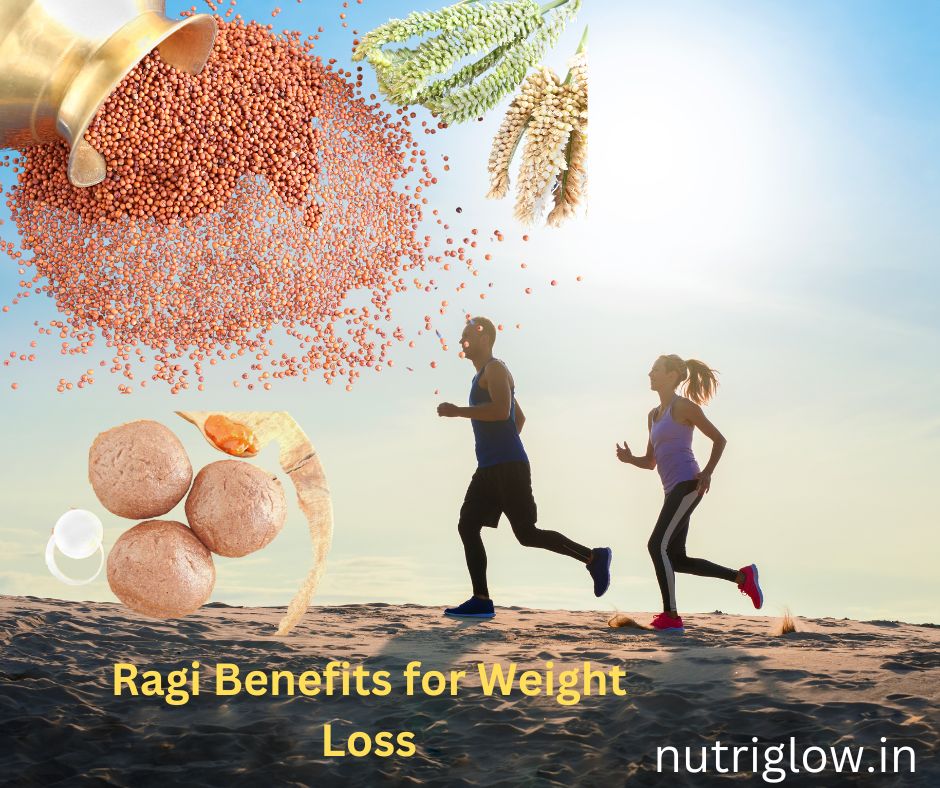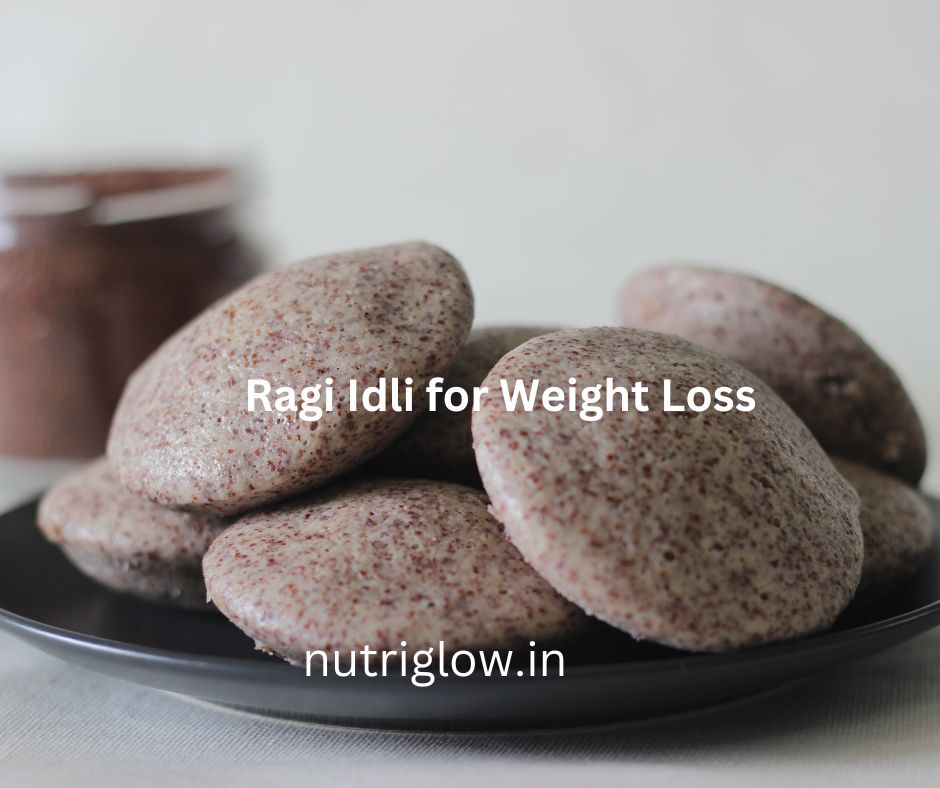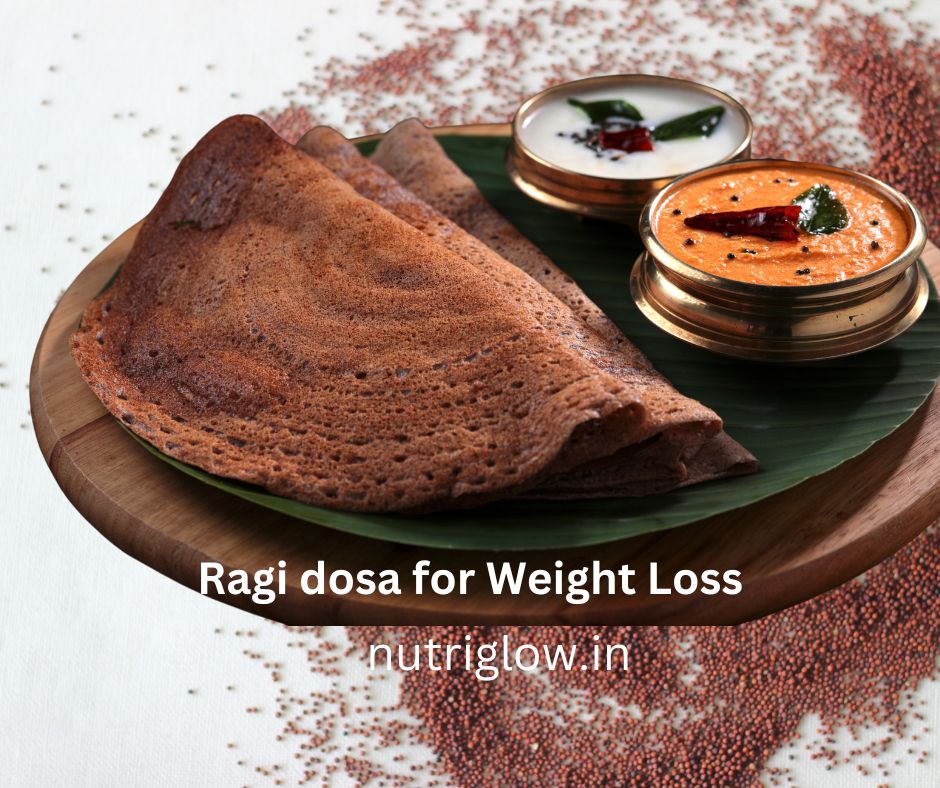
Is ragi flour good for weight loss? Regarding healthy eating and weight loss, ragi flour (also known as finger millet flour) is a game-changer. This ancient grain is not just a staple in Indian kitchens but also a powerhouse of nutrients. Whether you’re looking for something hearty, quick, or indulgent yet guilt-free, ragi can do it all. Let’s dive into why and how you can incorporate ragi into your weight loss journey. Ragi provides a significant amount of calcium and iron, essential for bone health and combating fatigue.
Ragi is incredibly rich in dietary fiber, which helps in controlling hunger pangs and promotes a feeling of fullness. With a low glycemic index, ragi is perfect for stabilizing blood sugar levels, a critical factor for effective weight management. Here is the Ragi Flour Recipes for Weight Loss article, which explains the complete guide to losing weight.
Ragi’s Nutritious Value
Ragi is a superfood with several health advantages. It is abundant in carbohydrates, dietary fiber, calcium, copper, and manganese. Additionally, it has modest levels of iron, zinc, magnesium, phosphorus, and B-complex vitamins. Ragi dishes are excellent recipes for weight loss.
Antioxidants like polyphenols and amino acids like tryptophan are found in ragi, which aids in the body’s absorption of all macro and micronutrients.
Here is a breakdown of key essential elements found in 100 g of dry ragi based on study data:
A total of 320.7 kcal
7.3 g of protein
77.0 g of carbohydrates
1.92 g of fat
Fiber: 11.5 g
364 mg of calcium
146 mg of magnesium
210 milligrams of phosphorus
443 milligrams of potassium and 3.1 mg of manganese
2.5 milligrams of zinc
15.3 µg of selenium
Folate: 34.6 µg
How Ragi Flour Aids Weight Loss
Keeps You Full for Longer
The high fiber in ragi slows down digestion, ensuring you stay full and avoid overeating.
Improves Digestion
Packed with natural fiber, ragi aids in better digestion, helping your body absorb nutrients more effectively.
Regulates Blood Sugar Levels
Its slow digestion and low glycemic index keep insulin levels stable, a boon for diabetics and those aiming to shed extra pounds.
How to Use Ragi Flour for Weight Loss
How to Eat Ragi to Lose Weight Ragi can be eaten in a variety of ways, making it simple to incorporate into your diet. Making a basic ragi porridge with ragi atta is one of the simplest and tastiest ways to consume ragi. Here are some pointers and recipe suggestions for anyone wishing to include ragi in their diet in order to lose weight.
How to Make Ragi Malt (Ragi Porridge):
Ragi malt, which is high in fiber, protein, and antioxidants, is a healthy and efficient weight-loss beverage. This malt is made from ragi (finger millet) flour and aids with blood sugar regulation, hunger suppression, and metabolism enhancement. Ragi malt helps people lose weight in a sustainable way because of its low calorie and glycemic index. Increased satiety, better digestion, and less belly fat can result from regular ingestion. In order to optimize the benefits of weight loss, mix ragi malt with a healthy diet and consistent exercise. Additionally, gluten-free ragi malt is a great choice for anyone who is intolerant to gluten. Use ragi malt to help you lose weight and enjoy all of its health advantages.
Ragi Malt for Weight Loss:
- Ingredients: Ragi flour, water, milk, honey.
- Method: Boil ragi flour with water, add milk, and sweeten with honey.
Ragi flour: The primary component of ragi malt, ragi flour is sometimes referred to as finger millet flour.
flour and water. Milk: Ragi malt can be made using milk, but it’s not required. You can use a non-dairy option to manufacture ragi malt without using milk.
Additional components: Additionally, you can include cashews, almonds, ghee, cardamom powder, and other dried fruits.
Sweetener options include dates, honey, jaggery, and sugar. Water: To make a slurry, combine the ragi
How to Make Ragi Idli for Weight Loss:

What is Ragi Idli? Ragi idli is a twist on the classic South Indian steamed rice-lentil cake. Here, ragi flour replaces a portion of the rice, making the dish more nutritious. Known for its earthy flavor and numerous health benefits, ragi is particularly rich in calcium, iron, and dietary fiber. Combining the goodness of ragi (finger millet) with the light and fluffy texture of traditional idlis, this dish is a powerhouse of nutrition. Perfect for health-conscious individuals, it’s also a tasty way to start your day.
Essential Ingredients:
• Ragi flour: 1 cup
• Urad dal (split black gram): ½ cup
• Fenugreek seeds: 1 teaspoon
• Salt: As needed
• Water: For soaking and grinding optional add-ons
• Grated carrots or finely chopped spinach for added nutrition.
Preparing the Batter Step 1:
Soak and Grind:
Wash the urad dal and fenugreek seeds thoroughly.
Soak them in water for 4–6 hours.
Grind the soaked mixture into a smooth, fluffy batter using minimal water.
Step 2: Mix the Ragi Flour:
• In a separate bowl, mix the ragi flour with enough water to make a smooth paste.
• Combine the ragi paste with the ground dal batter.
Add salt and mix well.
Step 3: Fermentation:
• Cover the batter and let it ferment overnight in a warm place.
• Ensure it doubles in volume for the best results.
Making the Perfect Ragi Idli: Prepare the Steamer
• Grease idli molds with a little oil.
• Heat water in the steamer.
• Pour the fermented batter into the molds, filling them halfway.
• Steam for 10–15 minutes on medium heat. • Check doneness by inserting a toothpick; it should come out clean.
How to make ragi roti:
Ragi, also known as finger millet flour, and whole wheat flour is used to make the rustic and healthful ragi roti, or nachni roti. Ragi is a protein- and calcium-rich ingredient that I frequently utilize in my cooking. These healthy rotis are made with minimal ingredients and pair well with any lentil or vegetable meal. An excellent and easy way to use ragi is to make chapatis or ragi rotis. Therefore, when I prepare chapatis, I frequently mix in some ragi flour with whole wheat flour. Sometimes I also make multigrain rotis with jowar flour, gram flour, and bajra flour.
1. Place 1 cup of whole wheat flour and 2 cups of ragi flour in a big basin or parat. Additionally, add 1 teaspoon of salt, or more if necessary.
3. Pour in one and a half cups of boiling water. Either a pan or an electric kettle can be used to heat water.
4. Using a spoon, mix. Once combined, wait a few minutes until the heat is manageable.
5. While still hot, start kneading the ingredients. Continue kneading and adding warm water gradually until the dough is soft after you are able to form it.
6. It should be soft dough. For 20 minutes, let the dough rest covered.
7. The dough should then be formed into medium-sized balls.
8. Press the ball flat. The dough ball should be dusted with ragi or whole wheat flour. Put the tawa on the gas stove and turn it on. To produce soft rotis, the tawa must be heated.
Ragi Cookies:
Ragi cookies are a great way to quench your sweet desire with something sweet. To make a dough, combine ragi flour, oats, butter, dates or stevia, jaggery, and baking powder. After rolling it out, cut it into the shapes you choose. Bake at 180 degrees Celsius for 15 to 20 minutes.
Ragi Flour Recipes for Weight Loss: Ragi Upma
Ragi upma is a simple, tasty, and satisfying breakfast choice. Ragi flour is roasted in oil and then combined with peas, carrots, and onions to make ragi upma. Serve hot with coconut chutney after adding water and cooking until the sauce thickens. An alternative is to prepare pulao or upma with ragi that has been soaked overnight. . Before adding soaked ragi to veggies or high-protein foods, pressure cook it.
How to Make Ragi Dosa for Weight Loss:

Ragi recipes
Dosa Ragi A healthy breakfast option that’s simple to make is ragi dosa.Ragi dosa is made from urad dal, rice flour, ragi flour, and water. Overnight, let the batter ferment. The next day, create a thin batter by adding water and salt. The batter should then be spread out on a hot pan and cooked until both sides are crispy. You can serve ragi dosa with sambar or chutney to improve its flavor.
Conclusion:
Ragi is a wholesome, nutrient-dense food that, when eaten in moderation, can help with weight loss. You may feel fuller for longer because of its high protein and fiber content. Additionally, it lessens the desire to nibble on bad meals. Additionally, ragi’s good fiber content aids with blood sugar regulation. It thereby avoids the abrupt peaks and valleys that result in overeating. A better lifestyle can be achieved by including ragi in your diet; however, exercise and a balanced diet are necessary for weight loss.

Pingback: Discover easy DIY homemade hair mask-Use natural ingredients